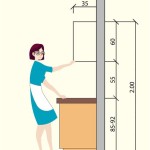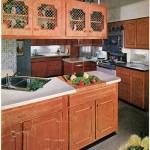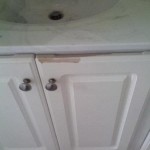Essential Aspects of Choosing the Right Cleaning Agent for Grease Removal on Kitchen Cabinets
Maintaining a clean and grease-free kitchen is essential for a hygienic and inviting space. Kitchen cabinets, in particular, are prone to accumulating grease and grime due to cooking fumes and splatters. Choosing the right cleaning agent is crucial to effectively remove grease without damaging the cabinet finishes.
To select the most suitable cleaning agent, several key factors should be considered:
Type of Cabinet Finish
The type of finish on your kitchen cabinets will determine the appropriate cleaning agent. For example, wood cabinets require a gentler approach compared to laminate or metal cabinets. Harsh cleaners can damage delicate wood surfaces, while stronger solvents may be necessary for non-porous finishes.
Cleaning Agent Ingredients
Pay attention to the ingredients of the cleaning agent. Some common ingredients used in degreasers include surfactants, solvents, and alkalis. Surfactants help break down grease, solvents dissolve the grease, and alkalis neutralize acidic grime. Choose a cleaner with ingredients appropriate for the type of finish on your cabinets.
Cleaning Agent Strength
The strength of the cleaning agent should match the level of grease accumulation. For light grease, a mild detergent or degreaser may suffice. For heavier grease, a stronger cleaner may be necessary. Avoid using overly abrasive cleaners, as they can scratch or damage the cabinet surfaces.
Testing the Cleaner
Before applying the cleaning agent to the entire cabinet, test it on an inconspicuous area to ensure it does not cause any adverse effects. Apply a small amount of the cleaner to the test area and allow it to sit for a few minutes. Wipe it off and inspect the surface for any changes in color or texture.
Application Method
The application method depends on the type of cleaner and the size of the greasy area. For liquid cleaners, use a soft cloth or sponge to apply the cleaner in circular motions. For aerosol cleaners, spray the cleaner onto the greasy surface from a distance of several inches. Allow the cleaner to dwell for a few minutes before wiping it off with a damp cloth.
Frequency of Cleaning
The frequency of cleaning depends on how often your kitchen is used and the level of grease accumulation. Regular cleaning is recommended to prevent grease buildup and maintain the appearance of your cabinets. Wipe down cabinet surfaces with a damp cloth or use a mild cleaning solution as needed.
Conclusion
Choosing the right cleaning agent for grease removal on kitchen cabinets is essential to effectively remove grease without damaging the cabinet finishes. By considering the type of cabinet finish, cleaning agent ingredients, strength, testing method, application method, and cleaning frequency, you can maintain clean and grease-free kitchen cabinets, enhancing the hygiene and aesthetics of your kitchen space.

How To Remove Grease From Kitchen Cabinets 3 Methods Bob Vila

How To Clean Sticky Grease Off Kitchen Cabinets Ovenclean

Best Ways To Clean Grease Stains Off Kitchen Cabinets

5 Tips On How To Clean Grease Off Kitchen Cabinets Tlc Cleaning

How To Clean Sticky Grease Off Kitchen Cabinets Infinity

Get Grease Off Kitchen Cabinets Easy And Naturally

How To Clean Grimy Kitchen Cabinets With 2 Ingredients

How Remove Grease From Wood Kitchen Cabinets

How To Clean Sticky Grease Off Kitchen Cabinets

Cleaning Grease Off Kitchen Cabinets Without Removing The Finish Homemade Solutions
Related Posts








